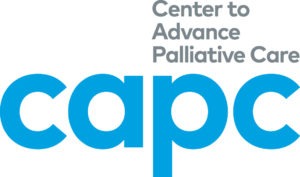Palliative Care Resources for Employers and Other Health Care Purchasers
As a health care purchaser, you can log in to get FREE access!
No account? No problem. Register HERE to create your new account. Or click Log In > Forgot Password in the upper-right hand corner to reset your password.
Approximately 11 million adults and upwards of 400,000 children in the US live with at least one serious illness, a number expected to increase significantly over the next two decades. And yet palliative care, specialized medical care that focuses on providing relief from the symptoms and stress of a serious illness, is underused and providers’ generally lack the training to deliver it. This leads to significant gaps in care.
Employers and other health care purchasers can play a powerful role in improving care for people living with a serious illness.
Catalyst for Payment Reform (CPR) partnered with the Center to Advance Palliative Care (CAPC) to expand awareness and support of palliative care among purchasers. We believe that the tremendous leverage purchasers have in the market to demand certain capabilities from contracted health plans, vendors, and health care providers can make a direct and significant improvement in the quality of life of employees living with serious illness and their caregivers.
CPR and CAPC have created a suite of tools to give employers and other health care purchasers resources and technical assistance for implementation of strategies to assure reliable access to high-quality palliative care:
1. How-to-Guide for Serious Illness Care Strategies
The How-to-Guide helps educate employers and other health care purchasers on the value of palliative care, how it can improve the quality of life for employees living with serious illness and their caregivers, and in so doing, reduce health care costs for them, as well as for their employers. It also introduces the Purchaser Toolkit for Serious Illness Care Strategies.
2. The Purchaser Toolkit for Serious Illness Care Strategies
The Toolkit designed to help purchasers develop a new palliative care strategy or infuse palliative care into existing health care programs. It includes:
- Request for Information (RFI): Access to Comprehensive and High-Quality Serious Illness Care, which allows purchasers to assess the offerings and capabilities of health plans related to care for seriously ill members.
- Evaluation Guidance and Model Responses, designed to help purchasers assess answers to the RFI questions. It can also act as a standalone document that can give purchasers a high-level sense of palliative care services and programs and how they compare.
- Model Health Plan Contract, which expresses the contractual duties of the health plan to the purchaser and outlines the purchaser’s expectations for how the plan shall facilitate progress in ensuring high-quality care for patients and family members facing serious illness.
- Health Plan Conversation Guide, which helps purchasers ensure their health plans are providing sufficient attention and resources to the seriously ill population and to track progress.
- ACO Checklist, created to help a purchaser ensure that their contracted accountable care organization has the palliative care capabilities and specialists needed to address the needs of the seriously ill population.
- Case Management Vendor Checklist, to help purchasers ensure that their case management vendor is providing sufficient attention and resources to those living with serious illness.
- Glossary of Terms, outlining and defining key concepts in serious illness care.
3. Case Studies and Specific Examples
The following case studies showcase the efforts of leading organizations, including purchasers already making strides in offering palliative care programs to their populations. Purchasers can use these case studies for ideas on how to implement their own palliative care programs.
- The Dow Chemical Company. Dow identified a problem upon scrutiny of its data – few eligible employees were taking advantage of the hospice benefits the company provided. Dow realized the root of the issue was a dilemma its employees were facing: to access hospice services, they had to give up curative treatment. Not wanting employees to have to make this choice, Dow worked with Aetna to implement the Compassionate Care program, allowing employees to utilize hospice benefits without having to abandon curative care.
- Community Care of North Carolina. North Carolina Medicaid recognized the potential of palliative care to improve quality of life for Medicaid beneficiaries and minimize program costs. The Medicaid agency partnered with Community Care of North Carolina (CCNC), a statewide medical home system, to create a comprehensive case management program leveraging a strategic risk assessment tool to identify patients most likely to benefit from case management.
- Blue Shield of California. The California Public Employees’ Retirement System (CalPERS) realized there were opportunities to improve care for members with serious illness and approached Blue Shield of California (Blue Shield), one of its contracted health plans, to come up with a creative solution. As a result, Blue Shield began building out a comprehensive, statewide provider network able to deliver targeted case management and palliative care services to the seriously ill population.
Purchasers are pulled in many directions; however, ensuring that individuals and families facing serious illness have the care they need can greatly improve the quality of life for employees while also reducing health care costs. We hope these resources give purchasers multiple ways to integrate palliative care into their high-value health care purchasing strategies.
Want to learn more? Check out our Virtual Event: Employers’ Search for Value Continues with Serious Illness Care
Type: Toolkit
$399.00
$399



